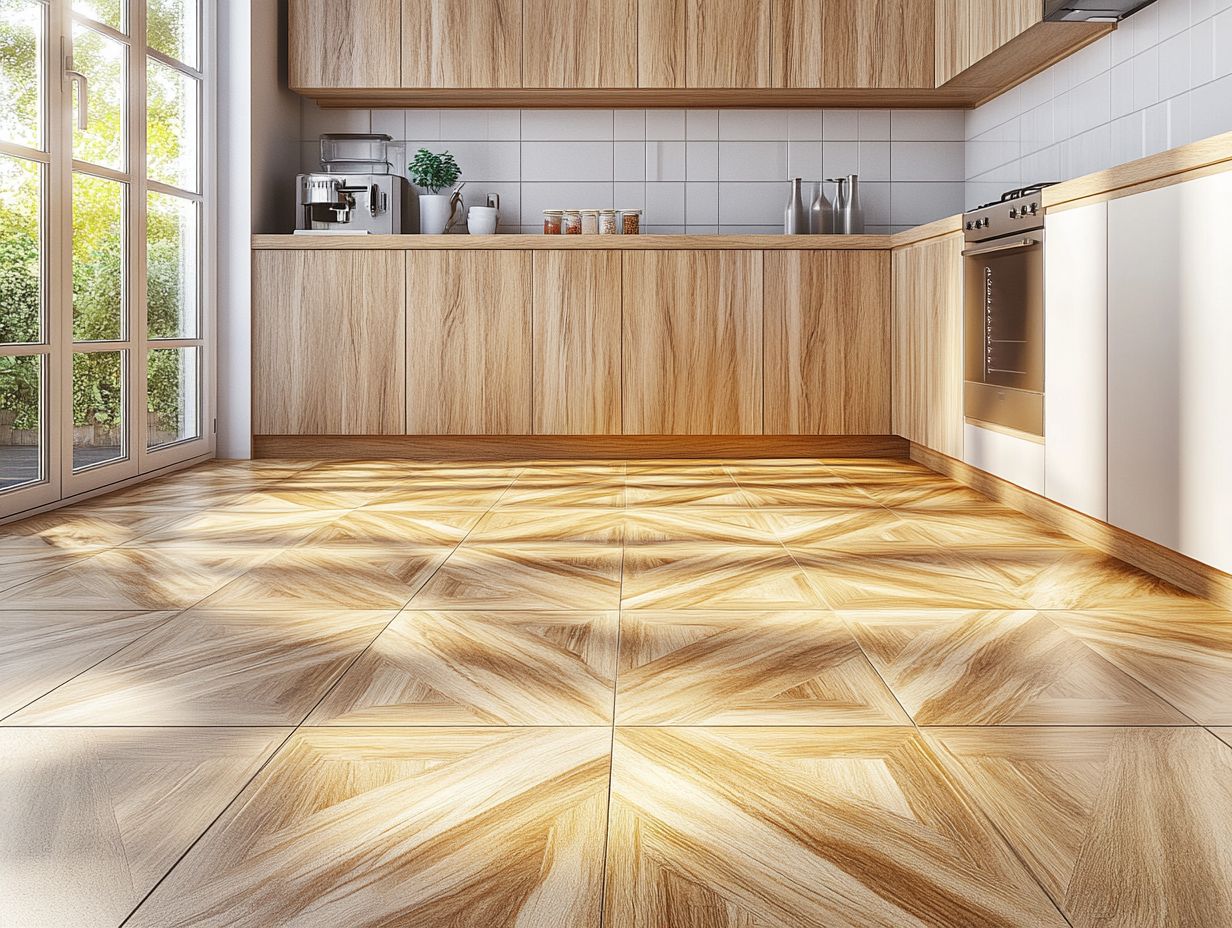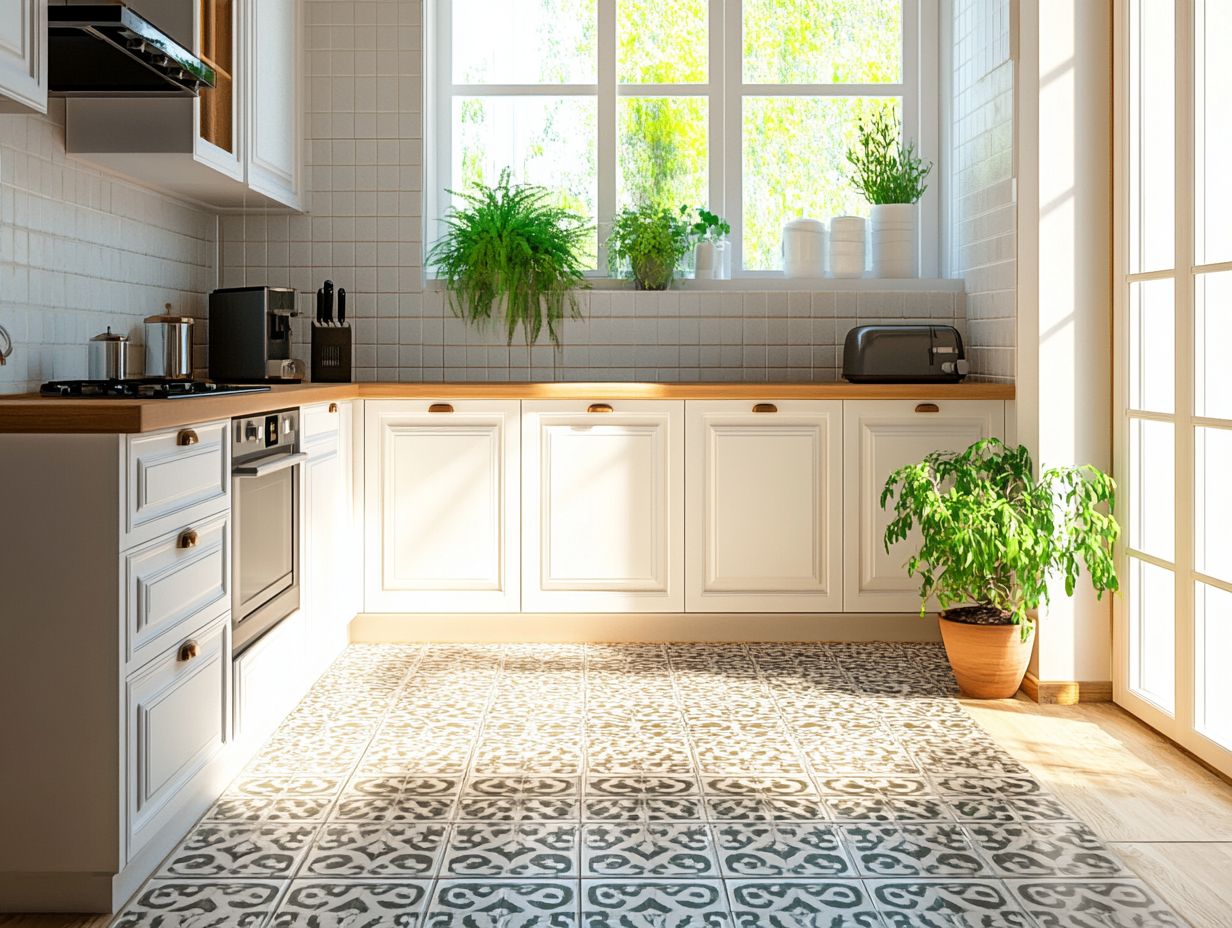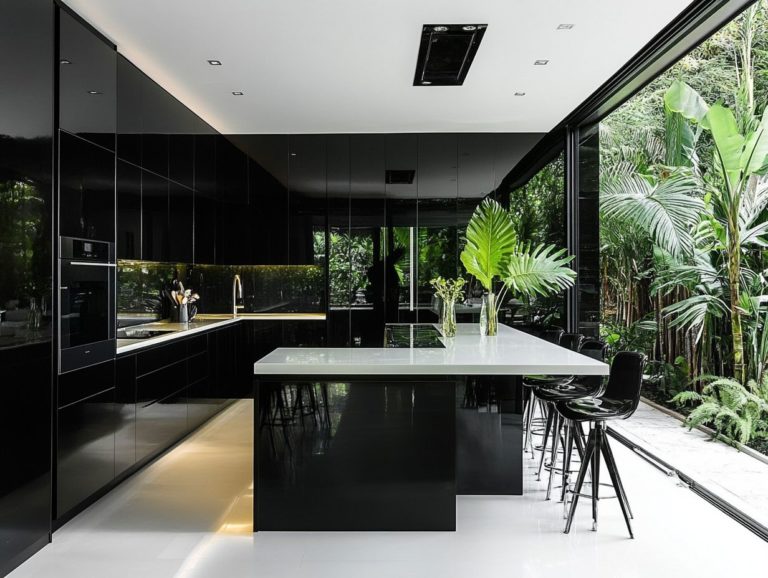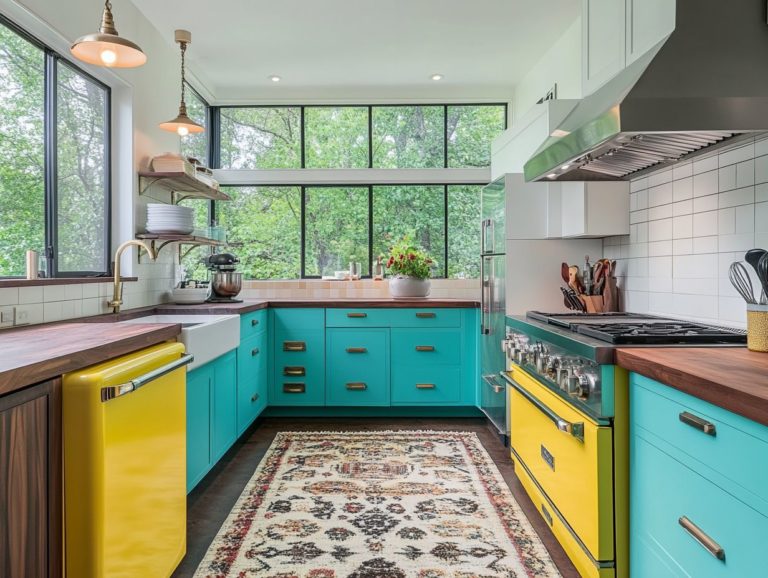Choosing the Right Flooring for Your Kitchen
Choosing the right flooring for your kitchen is an important choice. It affects both how the space functions and how it looks.
You have many options, so consider durability, maintenance, and overall style.
This guide covers different kitchen flooring types: hardwood, laminate, tile, vinyl, stone, and cork. You’ll learn the pros and cons of each material, get a cost comparison, and find installation and maintenance tips.
Get ready to elevate your kitchen!
Contents
- Key Takeaways:
- Factors to Consider When Choosing Kitchen Flooring
- Types of Kitchen Flooring
- Weighing the Pros and Cons of Flooring Types
- Discovering the Costs of Kitchen Flooring
- Installation and Maintenance Tips
- Frequently Asked Questions
- What factors should I consider when choosing the right flooring for my kitchen?
- Why does durability matter for your kitchen flooring choices?
- What are some durable flooring options for a kitchen?
- What flooring materials are best for water resistance in a kitchen?
- Can I install hardwood flooring in my kitchen?
- How can I ensure that the flooring I choose will match the style of my kitchen?
Key Takeaways:

Consider the durability and maintenance needs of different flooring types before making a choice.
Think about your kitchen’s style to ensure a cohesive and attractive look.
Evaluate the pros and cons of each flooring to find what fits your budget, lifestyle, and taste.
Factors to Consider When Choosing Kitchen Flooring
When renovating your kitchen, selecting the right flooring is crucial. It can impact both functionality and looks.
Contemplate durability, maintenance, budget, and style to create an environment that meets your household’s needs.
Consider foot traffic, stains, and moisture exposure as these factors will guide your flooring choice.
Durability and Maintenance
Prioritize durability and maintenance when selecting kitchen flooring. These factors greatly affect the longevity and upkeep of your material.
Hardwood, tile, and vinyl have unique advantages, so consider how each performs under foot traffic.
Hardwood offers elegance but may require regular refinishing to combat wear, especially in busy areas.
Tile resists stains and controls moisture well, making it a smart choice for kitchens prone to spills.
Vinyl flooring is resilient and low-maintenance, handling heavy foot traffic and moisture easily.
By understanding these features, you can make a decision that suits your lifestyle.
Style and Aesthetic
The style of your kitchen flooring shapes the overall feel of the space. Choosing the right material enhances visual appeal while providing practicality.
Hardwood adds warmth and charm, complementing various cabinetry and decor.
Ceramic tile offers a range of colors and textures. You can opt for a sleek modern finish or a rustic patterned look.
Luxury vinyl tile is a versatile option, mimicking natural materials while being durable and easy to maintain.
Each flooring type contributes uniquely to your kitchen’s aesthetic, helping you create a functional yet beautiful space.
Types of Kitchen Flooring
When considering kitchen flooring, you’ll find a variety of options, each with distinct attributes and benefits.
It’s essential to assess which choice aligns best with your renovation goals and lifestyle needs.
Hardwood

Hardwood flooring stands out as a classic option for your kitchen renovation. It brings unmatched warmth and aesthetic charm. However, it’s essential to consider its durability and maintenance requirements.
As a prospective homeowner, you should carefully weigh the benefits against potential drawbacks, especially in high-traffic areas like the kitchen. With proper maintenance, hardwood can withstand significant wear and tear. It’s important to recognize that spills and moisture can pose risks, requiring your diligent attention.
Implementing regular cleaning routines—think sweeping and the occasional mopping with a damp cloth—will help ensure the longevity of your flooring. You’ll also find an array of finishes available, from matte to high gloss, allowing you to personalize your style while enhancing the flooring’s resilience.
Each finish plays a unique role in shaping the overall ambiance. So, it’s crucial to select one that harmonizes beautifully with your kitchen’s design.
Laminate
Laminate flooring has become your go-to affordable option for kitchen flooring. It beautifully mimics hardwood while being easy to maintain.
This flooring type shines in terms of cost-effectiveness. Its notable durability makes it perfect for high-traffic areas like busy kitchens.
Enjoy worry-free living today, knowing that laminate can handle spills and stains without significant damage, thanks to its protective layer.
With a vast selection of styles—from rustic oak to sleek modern gray—you’re bound to discover a design that perfectly complements your kitchen’s aesthetic.
Thanks to its simple upkeep, laminate flooring stands out as a practical solution for those navigating a hectic lifestyle, effortlessly merging beauty with functionality.
Tile
Tile flooring, especially ceramic tile, is celebrated for its significant water-resistant qualities and extensive range of styles. This makes it an ideal choice for your kitchen.
This durability is essential in a space where spills and splashes happen frequently, granting you peace of mind as a homeowner.
With an array of design options, from natural stone to porcelain and intricate mosaics, you can craft a personalized aesthetic that complements your kitchen decor perfectly.
For example, earthy tones in natural stone tiles can create a warm, inviting atmosphere. Meanwhile, sleek, glossy ceramics can add a modern flair.
Beyond just looks, tile flooring stands out for its remarkable durability. It can handle heavy foot traffic and daily wear with ease, making it a wise investment for anyone eager to enhance their kitchen’s functionality without compromising on style.
Vinyl
Vinyl flooring, particularly luxury vinyl tile—a high-quality vinyl flooring option—is truly a standout choice. It is renowned for its comfort, affordability, and versatility, making it perfect for bustling kitchens.
You’ll appreciate the soft underfoot feel, ensuring comfort even during those long meal prep sessions or lively gatherings with friends and family.
It’s an economically savvy option for those who desire high-quality flooring without the hefty price tag.
Plus, vinyl’s notable resistance to stains and moisture makes it a practical solution for high-traffic areas where spills are bound to happen.
With an extensive range of styles and patterns available, including designs that authentically mimic the look of natural wood or sophisticated stone, you can effortlessly achieve a luxurious aesthetic while reaping the many benefits this innovative flooring material offers.
Stone
Natural stone tile presents a unique blend of durability and elegance, making it a luxurious choice for your kitchen flooring—albeit one that requires a bit of maintenance.
Unlike synthetic alternatives that may scratch or fade over time, natural stone offers a timeless beauty capable of elevating any space. With its diverse range of colors, textures, and patterns, you can create a customized look that perfectly aligns with your design aesthetic, whether it leans rustic or modern.
The inherent strength of natural stone resists wear and tear, making it particularly well-suited for high-traffic areas like kitchens. Compared to hardwood or laminate flooring, the distinct advantages in terms of longevity and moisture resistance make natural stone a smart and viable investment for years to come.
Cork

Cork flooring offers a remarkable blend of comfort and eco-friendliness. It’s an exceptional choice for durable kitchen flooring.
This innovative option provides a soft and comfortable surface. It feels gentle underfoot, benefiting your feet and joints.
Cork stands strong against everyday wear and tear. You can trust that your investment will hold up beautifully.
You’ll love how low maintenance cork is. It naturally resists mold, mildew, and pests, cutting down on harsh cleaning products.
What makes cork flooring truly special is how it’s sustainably produced. It’s harvested from cork oak trees without harming them. You can choose from many stylish designs and colors to elevate your home!
Weighing the Pros and Cons of Flooring Types
Each type of kitchen flooring has unique advantages and disadvantages. Consider these factors carefully before making your choice.
Discovering the Costs of Kitchen Flooring
Understanding the costs of various kitchen flooring options is crucial. This knowledge helps you make a decision that fits your renovation budget.
Installation and Maintenance Tips
Proper installation and maintenance extend the lifespan of your flooring. They also keep it looking stunning over the years.
Follow these guidelines to ensure your flooring stays stylish while withstanding daily activity.
Frequently Asked Questions
What factors should I consider when choosing the right flooring for my kitchen?

Consider durability, ease of maintenance, water resistance, style, and budget. These factors help guide your decision-making.
Why does durability matter for your kitchen flooring choices?
Durability is vital for kitchen flooring. This high-traffic area is prone to spills and heavy foot traffic.
What are some durable flooring options for a kitchen?
Durable options include ceramic tile, porcelain tile, natural stone, vinyl, and hardwood. These materials are built to last in busy kitchens.
What flooring materials are best for water resistance in a kitchen?
Vinyl, tile, and natural stone are great for water resistance. These non-porous materials resist damage from moisture and stains.
Can I install hardwood flooring in my kitchen?
Yes, you can use hardwood flooring in your kitchen. Choose water-resistant species, like oak or bamboo, and use a protective sealant.
How can I ensure that the flooring I choose will match the style of my kitchen?
Consider the color and design of your cabinets, countertops, and backsplash. Look for flooring options that complement these elements for a cohesive look.





